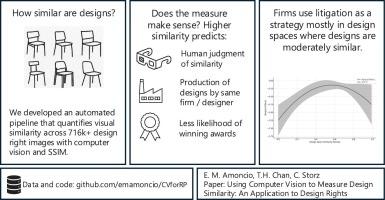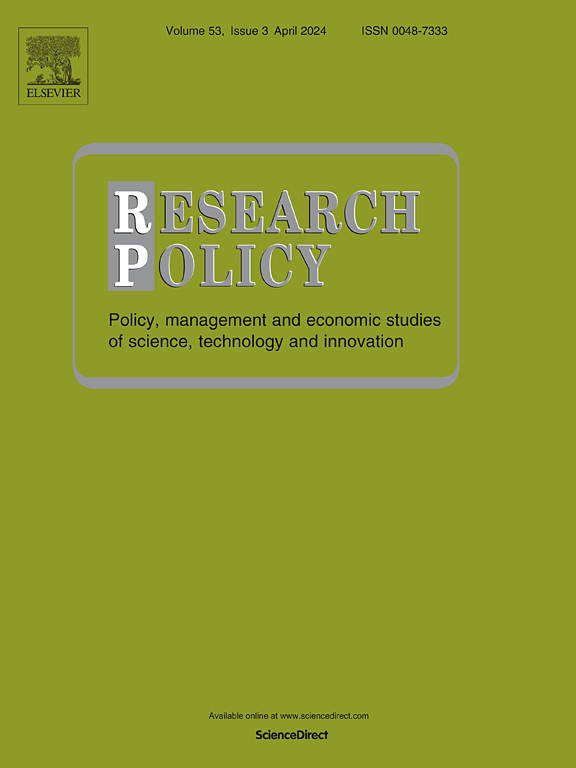用计算机视觉测量设计相似度:在设计权利中的应用
IF 8
1区 管理学
Q1 MANAGEMENT
引用次数: 0
摘要
公司之间的竞争越来越多地通过设计展开。我们展示了如何利用计算机视觉算法来衡量产品设计图像的大型数据集的设计权利的视觉相似性。特别是:我们提取并标准化了美国外观设计专利(1976-2023)中包含的716,168个独特的外观设计图像;采用结构相似度指标来量化图像之间的设计相似度;并严格验证由此产生的设计权相似性度量。然后,我们使用该测量来产生新的经验证据,即设计空间的相似密度在该空间的设计权利被提起诉讼的可能性方面呈现倒u形,这是先前提出但从未测试过的关系。我们的设计权相似度量应该有助于在设计权、创新和战略领域探索新的研究问题。我们允许对我们的代码和数据资源的开放访问,以鼓励在这些领域的研究。本文章由计算机程序翻译,如有差异,请以英文原文为准。

Using computer vision to measure design similarity: An application to design rights
Competition among firms has increasingly been through design. We show how computer vision algorithms can be leveraged to measure the visual similarity of design rights across large data sets of product design images. In particular: we extract and standardize 716,168 unique design images included in US design patents (1976–2023); adapt the structural similarity index measure to quantify design similarities between images; and rigorously validate the resulting measure of design rights similarity. We then use that measure to produce novel empirical evidence that a design space's similarity density exhibits an inverted U-shape with respect to the likelihood of that space's design rights being litigated—a relationship proposed previously but never tested. Our design rights similarity measure should facilitate the exploration of new research questions in the fields of design rights, innovation, and strategy. We grant open access to our code and data resources to encourage research in such fields.
求助全文
通过发布文献求助,成功后即可免费获取论文全文。
去求助
来源期刊

Research Policy
MANAGEMENT-
CiteScore
12.80
自引率
6.90%
发文量
182
期刊介绍:
Research Policy (RP) articles explore the interaction between innovation, technology, or research, and economic, social, political, and organizational processes, both empirically and theoretically. All RP papers are expected to provide insights with implications for policy or management.
Research Policy (RP) is a multidisciplinary journal focused on analyzing, understanding, and effectively addressing the challenges posed by innovation, technology, R&D, and science. This includes activities related to knowledge creation, diffusion, acquisition, and exploitation in the form of new or improved products, processes, or services, across economic, policy, management, organizational, and environmental dimensions.
 求助内容:
求助内容: 应助结果提醒方式:
应助结果提醒方式:


